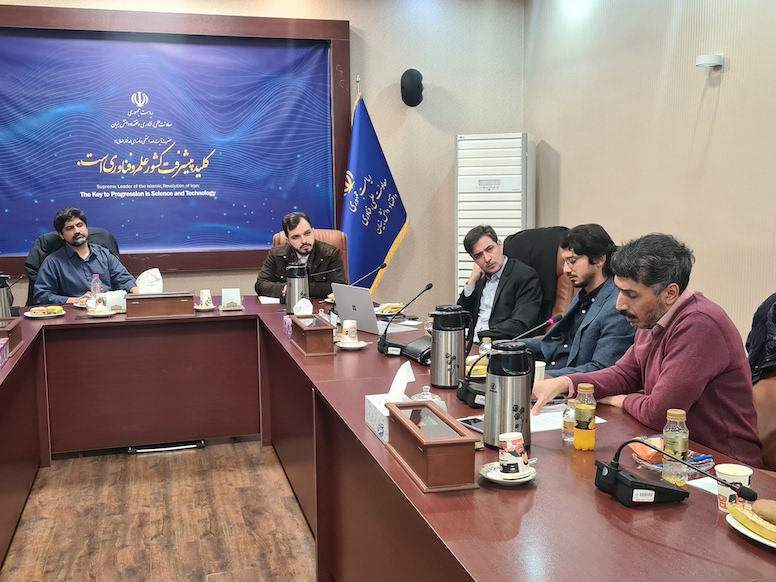
Session 1: Stakeholder Analysis of Economic Issues
In the recent meeting attended by a group of economic and energy specialists—including Dr. Mehdi Moḥaddedi, Dr. Mohammad Ḥabīb-pour, Dr. Vahid Asadzadeh, Dr. Garmābi, and Dr. Behzad Emrānzādeh—the following key topics were examined and analyzed: the energy imbalance crisis, monetary policy, and the housing crisis in Iran. This session focused in particular on practical solutions for managing Iran’s major economic challenges under current conditions.
In this session, attended by Dr. Mehdi Moḥaddedi, Dr. Mohammad Ḥabīb-pour, Dr. Vahid Asadzadeh, Dr. Garmābi, Dr. Behzad Emrānzādeh, Dr. Majid Ḥosseini, and Dr. Gorji, each of the esteemed participants presented their proposed plans.

The session began with Dr. Mehdi Moḥaddedi’s proposal. In his presentation, Dr. Moḥaddedi examined Iran’s energy imbalance and gave a detailed analysis of the natural gas production and consumption crisis. He noted that gas consumption in Iran has risen sharply over the past two decades and now accounts for about 65% of the country’s total energy use, while production has fallen significantly.
Root Causes of Iran’s Energy Imbalance:
Overreliance on natural gas, uneven consumption growth, and heavy dependence of power generation on gas are among the factors driving the energy imbalance crisis. Furthermore, with rising gas use in residential, industrial, and agricultural sectors alongside declining production, the country faces serious future energy supply challenges.
Key Stakeholders in the Energy Imbalance Crisis:
- Government and public institutions: Ministry of Oil, Ministry of Energy, Plan & Budget Organization, and Tavanir Company.
- Economic actors: Industrial companies and major gas consumers.
- International players: Neighboring countries like Qatar competing with Iran over the shared South Pars gas field.
- The public and household consumers: who account for a large share of gas consumption.
Dr. Moḥaddedi’s Proposed Solutions for Managing Energy Imbalance:
Dr. Moḥaddedi emphasized that to manage Iran’s energy imbalance crisis, it is essential to reform energy pricing policies, develop gas storage technologies, increase energy efficiency, and diversify electricity generation sources.
Next, Dr. Mohammad Ḥabīb-pour addressed monetary policies and the role of banks in the economy. He explained that banks are not only independent industries but also responsible for regulating liquidity throughout the economy. Dr. Ḥabīb-pour stressed that monetary policies must be impartial and transparent to prevent economic distortions.
Key Challenges in Monetary Policy and the Banking System:
Banks must allocate liquidity responsibly across various economic sectors and prevent specific industries from unduly influencing monetary policy changes.
Key Stakeholders in Monetary Policy and the Banking System:
- The government and Central Bank: which set monetary policies and manage liquidity.
- Banks and financial institutions: which play a crucial role in distributing liquidity.
- Industries and economic sectors: which depend on credit policies and financing.
- The public: who are affected by changes in monetary policy and exchange rates.
Dr. Ḥabīb-pour’s Proposed Solutions:
He proposed increasing transparency in banking processes, preventing undue influence of specific industries on monetary policy, and continuous monitoring of policy impacts as key reforms for the banking system.
After that, Dr. Garmābi examined the role of upstream and downstream industries and the positioning of sectors within the domestic and international value chains.
Housing Crisis and Policy Solutions:
Finally, Dr. Behzad Emrānzādeh analyzed Iran’s housing crisis and its structural and economic issues. He argued that housing is not only an economic matter but also a social, cultural, and political challenge, and that a purely economic perspective cannot resolve the crisis.
Key Challenges of the Housing Crisis:
Unprecedented rises in land and housing prices, the involvement of banks in the housing market, and a shortage of construction are among the main issues in Iran’s housing crisis.
Key Stakeholders in the Housing Crisis:
- Government and executive bodies: which should act as regulators in the housing market.
- Banks: which play the primary role in financing housing projects and allocating loans.
- Large companies and investors: which operate in the housing market and control a significant share of it.
- The public and tenant households: who are most affected by the housing crisis and skyrocketing land and housing prices.
Dr. Emrānzādeh’s Proposed Solutions:
He recommended identifying and regulating the main market players, revising financing policies, and expanding construction as key measures to resolve the housing crisis.
This session showcased expert analyses and innovative solutions for Iran’s economic crises. If the necessary policies in these areas are not implemented in time, Iran will face serious challenges in the near future.


